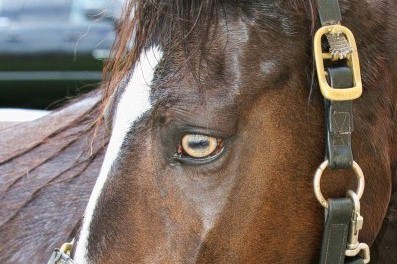Researchers Find Mutations Behind ‘Tiger Eye’ in Paso Finos

The “tiger eye”—featuring a bright yellow, amber, or orange iris—can give this gaited breed a dramatic look, apparently without side effects, said Rebecca Bellone, PhD, associate adjunct professor in the University of California, Davis, Department of Population Health and Reproduction and Veterinary Genetics Laboratory.
Bellone and two of her undergraduate students, Maura Mack and Elizabeth Kowalski, recently delved into the “fun study” of finding the genetic mutations responsible for this unusual eye color, she said. They investigated genomic information on more than 300 horses, including over 70,000 markers across the genome of 24 Puerto Rican Paso Finos. This revealed two specific mutations on the SLC24A5 gene that appear to be responsible for the tiger-eye coloring.
Mutations in this same gene in humans causes a form of albinism, Bellone said. But in humans, those mutations seem to cause reduced pigmentation not only in the iris but also in the hair and skin. The equine mutations, however, seem to affect iris color alone
Create a free account with TheHorse.com to view this content.
TheHorse.com is home to thousands of free articles about horse health care. In order to access some of our exclusive free content, you must be signed into TheHorse.com.
Start your free account today!
Already have an account?
and continue reading.

Written by:
Christa Lesté-Lasserre, MA
Related Articles
Stay on top of the most recent Horse Health news with















